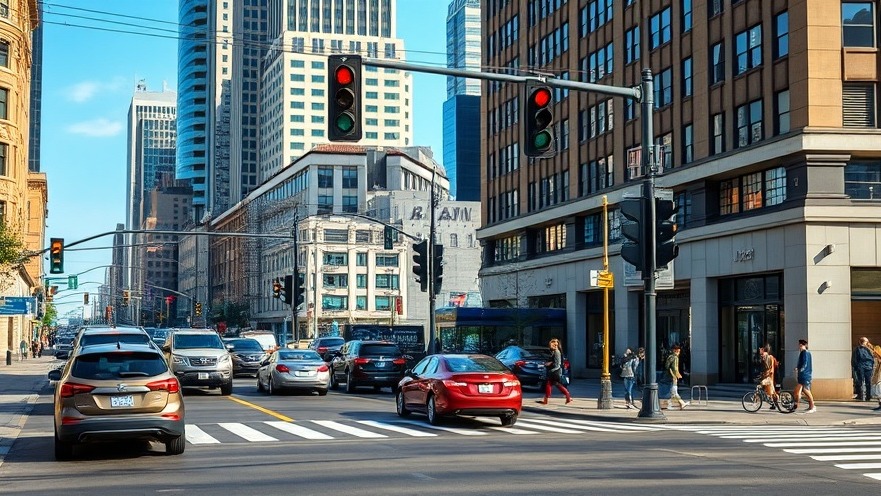
Cedar Park Takes a Step Forward with New Infrastructure Investment
The Cedar Park Council recently voted to authorize a $495,000 agreement aimed at improving critical intersections and expanding turn lanes throughout the city. As Cedar Park continues to grow with its booming population, these enhancements are considered vital for ensuring traffic safety and easing congestion on busy roadways. Designed to address long-standing traffic bottlenecks, this initiative may serve as a template for future community planning.
Traffic Challenges in Cedar Park: A Growing Concern
As Cedar Park evolves from a quaint suburb to a bustling urban area, traffic congestion has become an increasingly pertinent issue. Over the past decade, the city's population has seen significant growth, resulting in more vehicles on the road and exacerbated delays during peak hours. Residents commonly express their frustration, complete with tales of long waits at intersections that hinder daily life and create safety risks, especially for pedestrians and cyclists.
Understanding the Importance of Infrastructure Upgrades
This investment in traffic design is welcomed not just for immediate relief but also for the long-term advantages it promises. Improved intersections and additional turn lanes can lead to reduced travel times, increased safety, and ultimately, a better quality of life for Cedar Park residents. In comparison, many cities that have undertaken similar projects—such as Austin—have experienced direct benefits not only in reduced congestion but also in increased local commerce as easier traffic flow often leads to greater access to local businesses.
Future Trends in Cedar Park's Urban Development
Looking ahead, Cedar Park’s strategic investment can be seen as part of a broader trend shaping urban development in the Austin metropolitan area. As regional planners emphasize “smart growth” principles, cities are increasingly focused on enhancing existing infrastructure rather than sprawling outward. This forward-thinking approach encourages sustainable development while preserving the unique character of communities like Cedar Park. Observers suggest that if infrastructure improvements continue to be prioritized, Cedar Park could emerge as a model for other cities grappling with similar traffic issues.
What Residents Need to Know About the Upcoming Changes
Informed residents can prepare for the changes ahead. Community involvement remains crucial, especially as these designs move into implementation stages. Public meetings are expected to be scheduled, providing residents an opportunity to voice concerns and contribute suggestions on further improvements. Staying engaged will not only help ensure that the community’s unique needs are met but also foster a sense of ownership and pride in the changes occurring throughout the city.
Concluding Thoughts: A Community Investing in Its Future
The decision by Cedar Park officials to allocate funds for intersection and turn lane improvements is more than a mere fiscal transaction; it represents a proactive step towards addressing real concerns that impact daily life for residents. As cities continue to adapt to growth, such investments in infrastructure are crucial for maintaining livability. With community engagement and responsible planning, Cedar Park is poised to enhance its reputation not only as a thriving suburb but as a model for urban development. Residents are encouraged to participate in upcoming discussions to ensure their voices influence the direction of Cedar Park’s future.
By staying informed and participating in local events, residents can play a vital part in shaping the future of their community. Don't miss out on the chance to voice your opinion on how these changes can enhance your experience in Cedar Park!
 Add Element
Add Element  Add Row
Add Row 



 Add Row
Add Row  Add
Add 


Write A Comment